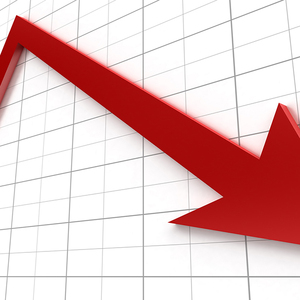The WPJ
THE WORLD PROPERTY JOURNALReal Estate Facts Not Fiction
Vacation Real Estate News
U.S. Hotel Industry Continues Performance Decline in January
Vacation News » Vacation & Leisure Real Estate Edition | By Michael Gerrity | February 24, 2010 9:00 AM ET
(HENDERSONVILLE, TN) -- According to data from STR, the U.S. hotel industry posted declines in all three key performance measurements during January 2010.
In year-over-year measurements, the industry's occupancy ended the month virtually flat with a 0.4-percent decrease to 45.1 percent. Average daily rate dropped 7.1 percent to finish the month at US$93.93. Revenue per available room for the month decreased 7.4 percent to finish at US$42.35.
"January's results continue the pattern of demand improvement that began toward the end of 2009," said Mark Lomanno, president of STR. "We expect this trend of positive demand growth to continue throughout most of this year. Hopefully, this will result in a firming of prices before too many more months go by."
Among the Chain Scale segments, three of the seven segments reported occupancy increases: the Luxury segment (+9.4 percent to 57.2 percent); the Upper Upscale segment (+5.4 percent to 56.1 percent); and the Upscale segment (+4.0 percent to 53.1 percent).
Among the Top 25 Markets, Boston, Massachusetts, reported the largest occupancy increase, up 18.3 percent to 48.9 percent, followed by Detroit, Michigan (+11.2 percent to 44.5 percent), and Miami-Hialeah, Florida (+10.6 percent to 74.6 percent). Houston, Texas, experienced the largest occupancy decrease, due to the lingering effects of Hurricane Ike, falling 15.7 percent to 49.0 percent.
Los Angeles-Long Beach, California, ended the month virtually flat in ADR growth with a 0.1-percent increase to US$119.80. Washington, D.C., which hosted President Barack Obama's presidential inauguration on 20 January 2009, posted the largest ADR decrease, falling 27.2 percent to US$132.65. Tampa-St. Petersburg, Florida, which hosted Super Bowl XLIII on 1 February 2009, also reported a large ADR decrease, falling 25.4 percent decrease to US$94.27.
Boston experienced the largest RevPAR increase, rising 11.9 percent to US$56.61. Three other markets reported RevPAR increases for the month: Los Angeles-Long Beach (+6.1 percent to US$74.07); Miami-Hialeah (+4.2 percent to US$124.05); and Atlanta, Georgia (+2.5 percent to US$43.85). Washington, D.C., posted the largest RevPAR decrease, falling 32.3 percent to US$64.19, followed by Tampa-St. Petersburg (-27.6 percent to US$48.29) and Houston (-23.8 percent to US$42.66).
Sign Up Free | The WPJ Weekly Newsletter
Relevant real estate news.
Actionable market intelligence.
Right to your inbox every week.
Real Estate Listings Showcase
Related News Stories
Vacation Real Estate Headlines
- Asia Pacific Hotel Revenues to Rise in 2024 Despite Economic Volatility
- Tourist Bookings to Hawaii Down 50 Percent Since Maui Wildfires
- Demand for Vacation Homes in U.S. Hit 7-Year Low in August
- International Travel for Americans Jumps Over 200 Percent in 2023
- U.S. Labor Day Weekend Travel To Uptick in 2023
- Asia Pacific Hotel Investment Collapses 51 Percent in 2023
- As Summer Travel Season Winds Down, U.S. Gas Prices Rise Again
- Record Setting 50.7 Million Americans to Travel This July Fourth Holiday
- Israel Hotels Poised for Growth as International Visitors Set to Return
- Over 42 Million Americans to Travel This Memorial Holiday Weekend
- European Hotel Transactions Decline 18 Percent in 2022 as Interest Rates Surge
- U.S. Vacation Home Demand Dives 50 Percent from Pre-Pandemic Levels
- European Hotel Values Upticked 3 Percent in 2022
- U.S. Vacation Rental Bookings Rise 27 Percent Annually in January
- Third-Party Hotel Operators Set to Increase Across Europe in 2023
- 113 Million People Traveling in the U.S. During the 2022 Holiday Season
- London Hotels Set to Weather High Inflation in 2022
- Almost 55 Million People to Travel This Thanksgiving Holiday in America
- Düsseldorf Hotels Enjoy Growing Corporate Demand in 2022
- Global Hotel Investment Activity in Asia Pacific to Rise 80 Percent in 2022
- Japan Lifts Foreign Inbound Covid Travel Restrictions in October
- Demand for Second Vacation Homes in the U.S. Decline
- Amsterdam Hotels Enjoy Comeback Post Covid Travel Restrictions
- 47.9 Million Americans Will Travel This July 4th Weekend
- High Prices, Rising Rates, Economic Uncertainty Ends Vacation Home Boom in America
- My Top 3 July Fourth Vacation Getaways in America Revealed for 2022
- Post Covid, New York City Hotel Market on the Road to Recovery
- Fast Rising Gas Prices to Impede U.S. Vacation Travel in H2 of 2022
- Post-Covid, Paris Hotel Sector Set for Strong Recovery as Demand Grows
- Singapore Hotel Demand to Accelerate in Late 2022
- 39.2 Million Americans to Travel Memorial Weekend, Says AAA
- Covid Driven Vacation Home Boom in America Now Ending in 2022
- Turks and Caicos Vacation Home Sales Enjoy Record-Breaking 2021
- Asia Pacific Hotel Sector Enjoys $8.5 Billion of Investment in 2021
- London Hotels Enjoying a Flight to Quality
- Demand for Vacation Homes Up 77 Percent From Pre-Pandemic Levels
- Even With Omicron, 109 Million Americans Traveling for the Holidays in 2021
- U.S. Vacation Home Demand Still Strong in Late 2021
- Top 5 Christmas Getaways in America Revealed
- Vacation Home Markets in the U.S. Remain Strong
Reader Poll
Marketplace Links
This website uses cookies to improve user experience. By using our website you consent in accordance with our Cookie Policy. Read More





